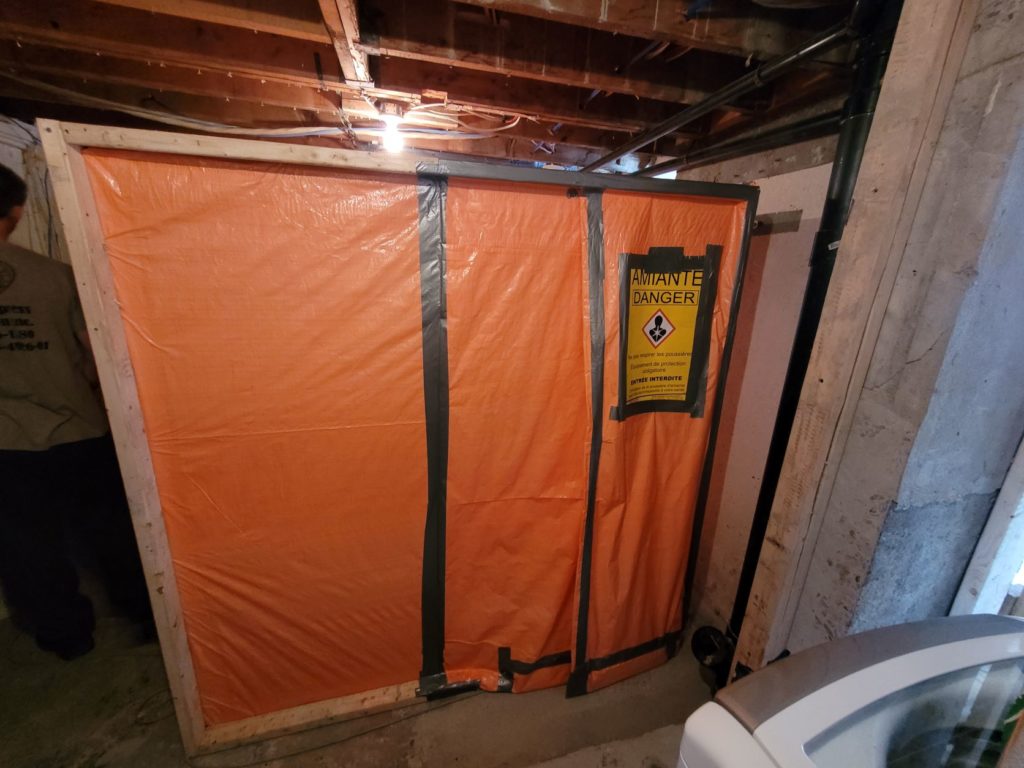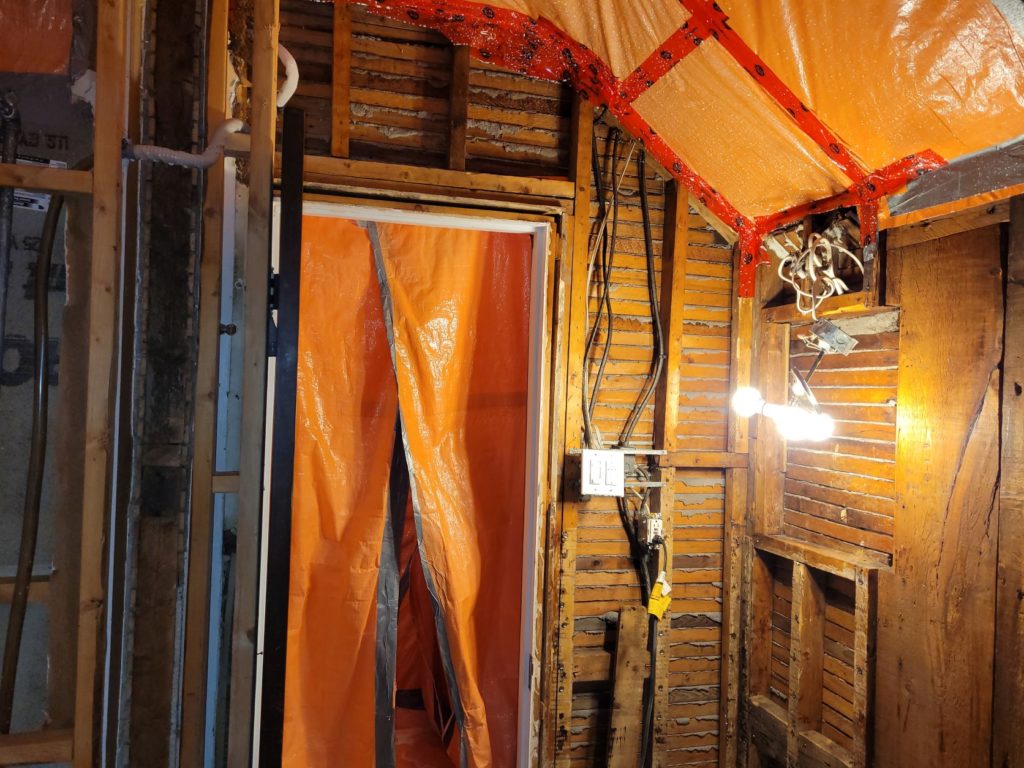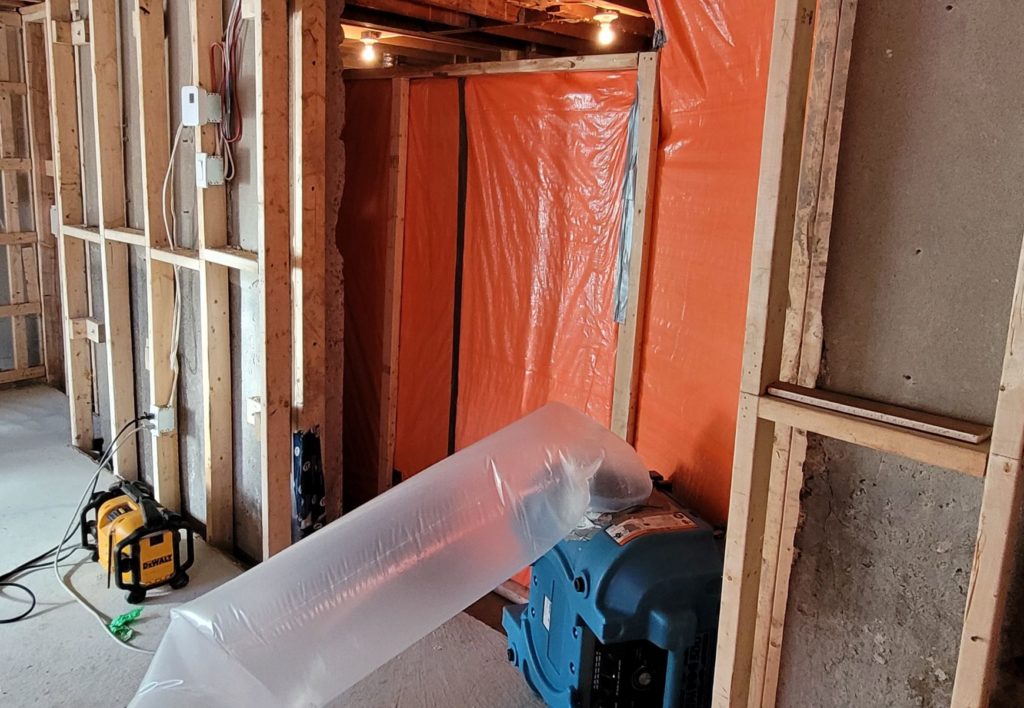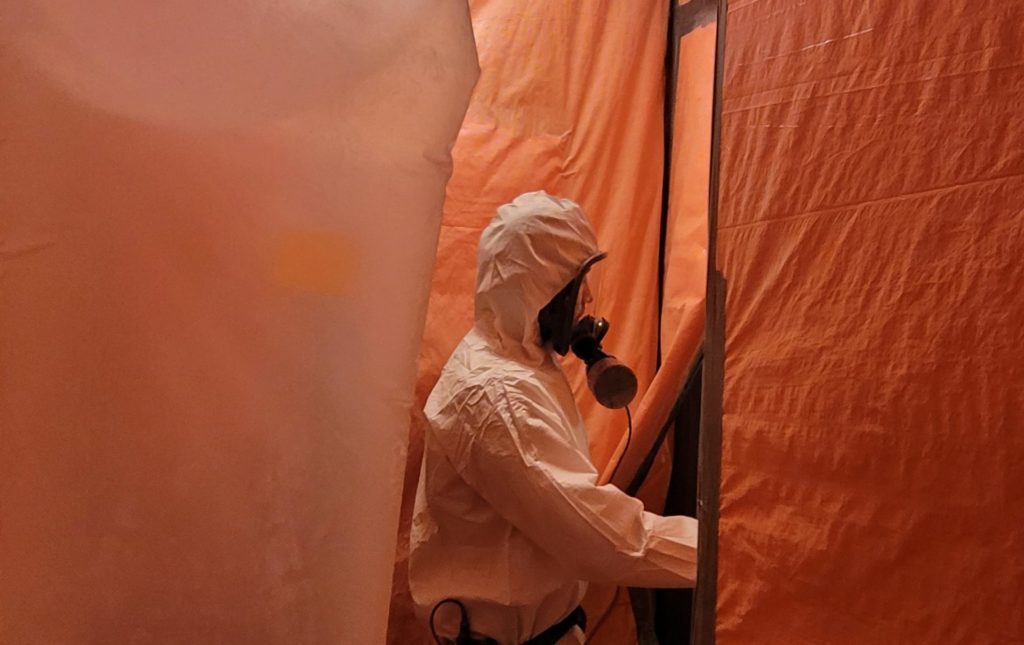How to tell if there is asbestos in walls ?
Asbestos in walls | Recognize asbestos in plaster
First of all, it is necessary to know the year of construction of the building or the house in question. Once the year of construction is known, it must be inspected to be certain that none of the materials show signs of degradation. Finally, because asbestos is not visible to the naked eye, the best way to detect the presence of asbestos in your home is to have materials tested in laboratories as soon as its presence is suspected.
Asbestos was used in building materials between the 1920s and 1990s. Plaster can contain asbestos, so it’s important to recognize where it’s being used before disturbing it. Asbestos has been linked to a number of health problems, including mesothelioma, a rare cancer that affects the lining of the lungs. Asbestos is used as an insulating material in building construction, including certain walls and ceiling coatings. It was popular because asbestos fibers are resistant to heat, fire and electricity. However, its use has been gradually abandoned due to the health risks associated with it.
If you think your walls contains asbestos, look for the following:
- a powder, especially in older homes
- dark gray to brown material in plaster
- cracks in the cast that may appear as spidery lines
- brittle material that can be crumbled by hand
- textured surfaces and popcorn ceilings
it has a rough surface
Decontamination Services
About asbestos
- Asbestos in House
- Asbestos isolation
- Asbestos panel
- Asbestos ceiling
- Asbestos in plaster
How to know if a plaster wall contains asbestos ?
Determining whether a plaster wall contains asbestos requires professional assessment and testing. Asbestos is not visible to the naked eye, and its presence in building materials can only be confirmed through laboratory analysis. Here are the general steps you can take to assess whether a plaster wall contains asbestos:
Consult a Professional: Hire a qualified asbestos professional, such as an asbestos inspector or an environmental consultant, to assess the material in question. These professionals are trained to identify and handle asbestos-containing materials.
Visual Inspection: An asbestos professional will visually inspect the plaster wall for signs of asbestos. However, visual inspection alone is not sufficient to confirm the presence of asbestos, as asbestos fibers are microscopic.
Sampling: If the professional suspects that the plaster may contain asbestos, they will take samples for laboratory analysis. This involves carefully collecting small pieces of the material for testing.
Laboratory Analysis: The collected samples are sent to a certified laboratory for analysis. Microscopic examination is conducted to identify the presence and type of asbestos fibers in the material.
Receive Test Results: Once the laboratory analysis is complete, you will receive the test results indicating whether asbestos is present in the plaster wall and the type of asbestos if detected.
It’s important to note that DIY testing for asbestos is not recommended. Disturbing materials that may contain asbestos without proper precautions can release asbestos fibers into the air, posing health risks. Always rely on professionals who are trained and equipped to handle asbestos testing and, if necessary, asbestos removal.
If you are planning renovations or suspect the presence of asbestos in your home, consult with local environmental agencies or asbestos professionals to ensure proper testing and handling procedures are followed. Always adhere to local regulations and guidelines to ensure the safety of occupants and workers.
If you suspect your plaster contains asbestos, contact an asbestos decontamination expert and a materials test can be performed. In the meantime, don’t touch it.
Keep children and pregnant women away from potentially hazardous materials.
Do not paint over the material as it could pose a hazard if you disturb it later. If any of these materials are present, it is best to contact an expert who can safely test it and remove it if necessary.
There are strict regulations regarding how to remove these hazardous materials. If the material is not removed properly, it can pose serious health risks to people living in your home. Removing asbestos from plaster is a complex process that involves several steps, including some cleaning products and ventilation. Asbestos must be removed and disposed of properly. These steps should be undertaken by a professional who has the necessary training and equipment.
If you plan to renovate your home, it would be a good idea to check for the presence of asbestos before starting the work.
Asbestos in plaster | Which plaster materials are likely to contain asbestos?
What types of asbestos are used in plaster? Amosite (brown) and crocidolite (blue). These forms contain amphiboles rather than chrysotile, which means the risks are considered greater. Where is asbestos commonly found in plaster? Ceiling tiles, walls, floor tiles and transit plates are all common places one can find asbestos in plaster.
Am I in danger? Generally, only those working on asbestos renovation or removal are at risk. This is why decontamination procedures are very important. If you are concerned about the presence of any form of asbestos in the plaster in your home, consult a professional for its removal.

Brands of plaster that contain asbestos
Plaster, prized for its insulation and fire-retardant qualities, often included asbestos as an additive. Determining the specific brand of plaster in a building is challenging unless detailed records of construction and renovation are available.
Here are some plaster brands known to have contained asbestos:
- National Gypsum: Produced various types of their “Gold Bond” plaster from 1935 to 1975.
- Georgia-Pacific: Manufactured “Acoustical” and “Patching” plaster from 1950 to 1977.
- United States Gypsum: Produced different types of acoustical plaster from 1920 to 1975.
- Synkoloid: Manufactured various types of their “Synko” plaster from 1950 to 1976.
Additional Indicators Pointing to the Presence of Asbestos in a Home's Walls
While it’s challenging to visually confirm the presence of asbestos within a home’s walls without professional testing, there are some signs and considerations that may suggest the possible use of asbestos-containing materials (ACMs). Keep in mind that these signs are not definitive, and professional testing is always recommended for accurate confirmation. Here are some indicators:
-
Age of the Building: Buildings constructed before the 1990s are more likely to contain asbestos, as it was commonly used in construction materials until then. However, it’s important to note that asbestos use in some materials persisted beyond the 1980s.
-
Material Appearance: Certain building materials that may contain asbestos, such as insulation, may have a distinctive appearance. Asbestos-containing materials can sometimes have a fibrous or fluffy texture.
-
Unusual Color or Pattern: Some asbestos-containing materials, such as vinyl floor tiles or certain types of insulation, may have distinctive colors or patterns. However, appearance alone is not a reliable indicator, and testing is necessary for confirmation.
-
Historical Documentation: Check available records, building permits, or documentation related to the construction or renovation of the property. These records may provide information about the materials used.
-
Professional Inspection: Hire a licensed asbestos inspector or abatement professional to assess the property. They have the expertise to identify potential asbestos-containing materials and can conduct testing if needed.
-
Friable Materials: Asbestos becomes a health risk when it is friable, meaning it can easily crumble or be reduced to powder. If you notice damaged or deteriorating materials that could potentially contain asbestos, it raises the risk of asbestos exposure.
Remember that asbestos is often found in various building materials, including insulation, tiles, siding, and textured paints. The safest approach is to treat any suspect material as if it contains asbestos until proven otherwise through professional testing. Attempting to handle or disturb asbestos-containing materials without proper precautions can lead to the release of asbestos fibers, posing health risks. Always consult with professionals for testing and safe handling procedures.
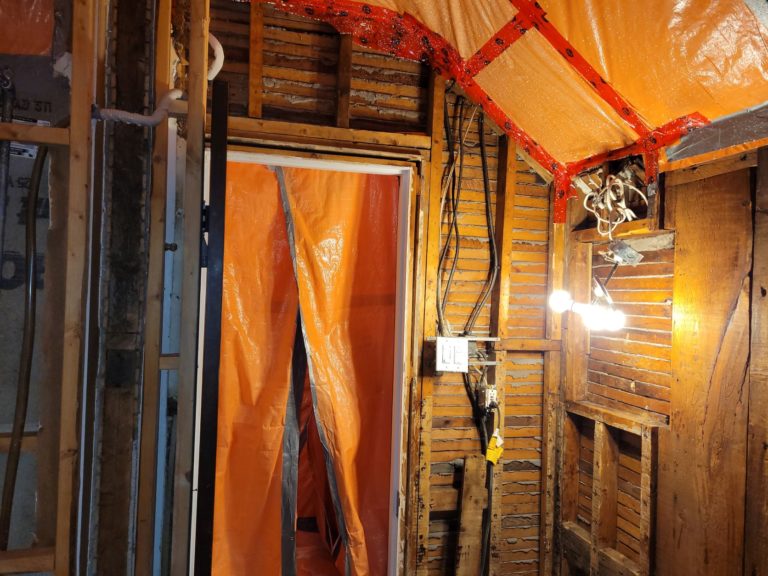
Asbestos in plaster | Studies carried out
The presence of asbestos in plaster in Canada was studied by analyzing the mass and volume distributions of asbestos fibers in dust collected from six houses where plaster was disturbed. The fibers identified included chrysotile, actinolite/tremolite, anthophyllite and tremolite-actinolite.
40% of dust samples contained at least one of these types of asbestos. Chrysotile was most prevalent in plaster, with concentrations ranging from 6 to 25 μg/100 cm 2 . Fiber mass concentrations in dust associated with open ceilings ranged from 0.085 to 10 mg/m 3 , and fibers were visible on almost all open ceilings. Fibers were more common on surfaces where plaster had been disturbed, but some fiber concentrations in undisturbed areas of homes exceeded 10 mg/m3.
The results of this study confirm the need to remove materials containing asbestos, even if no visible damage has occurred; the use of containment methods can reduce exposure during this work.
Asbestos in plaster | It's uses
Asbestos was a very commonly used fire-retardant material in building construction until the 1980s, when health concerns prompted a search for safer alternatives. The synthetic fibers that make up asbestos are heat resistant and strengthen other building materials such as cement, plastic and plaster.
In older buildings, you may recognize Amino Plaster by its dull appearance or by its smell.
Asbestos was very useful for building construction because of its resistance to fire and heat, as well as its strength. However, the fibers given off during the heating process were dangerous.
The blue pigment added to the amino plaster was composed of asbestos fibers, which made it more fire resistant and more durable than ordinary white plaster. The site of a fire would become so hot that the plaster coating began to melt and run, sealing the surface of the wall.
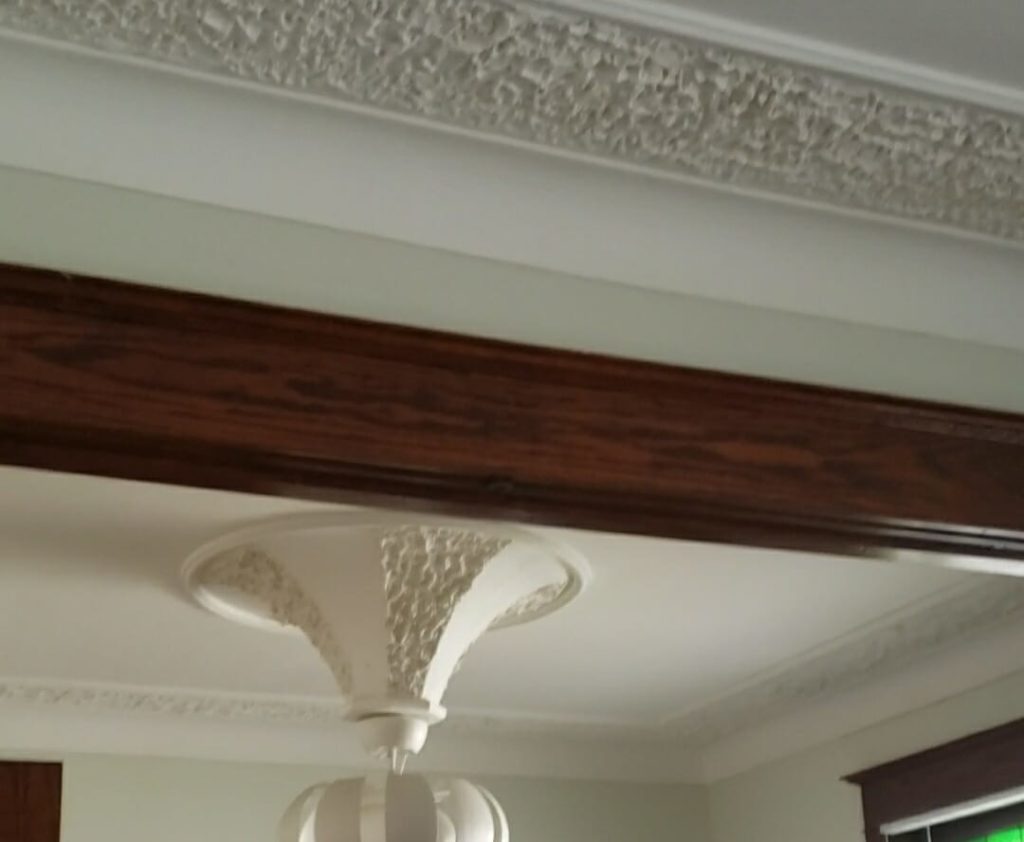
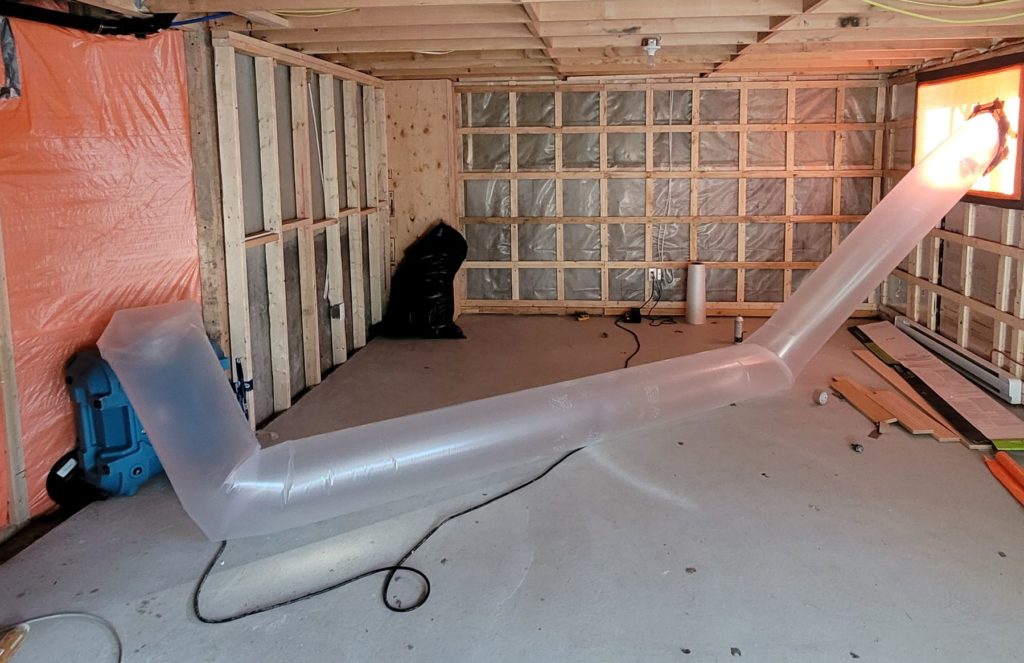
The health dangers of asbestos were not well known until 1999, when victims began to sue manufacturers for selling dangerous products. Victims often suffered from asbestosis and lung cancer due to inhaling airborne asbestos fibers.
Amino plaster was preferred over ordinary white plaster because it offered the fire and heat resistance of asbestos without exposing people to health risks. Asbestos is now banned in building materials in most countries, but buildings constructed before this ban still contain traces of it.
Amino plaster use has declined due to public concern about its dangerous effects but it is still possible to recognize traces of asbestos in older buildings.
Asbestos was a very commonly used fire-retardant material in building construction until the 1980s, when health concerns prompted a search for safer alternatives. The synthetic fibers that make up asbestos are heat resistant and strengthen other building materials such as cement, plastic and plaster.
Asbestos in drywall
Asbestos was commonly used in various building materials, including drywall, due to its desirable properties such as fire resistance, strength, and insulation. However, it’s important to note that the use of asbestos in construction materials has significantly decreased or been eliminated in many countries due to the associated health risks. Asbestos is a known carcinogen, and inhalation of its fibers can lead to serious respiratory diseases.
Here are some potential uses of asbestos in drywall and other building materials in the past:
Fire Resistance: Asbestos fibers have excellent fire-resistant properties, and they were often added to building materials, including drywall, to enhance fire resistance.
Insulation: Asbestos has good insulating properties, both in terms of thermal and acoustical insulation. It was used to improve the insulation capabilities of drywall.
Strength and Durability: Asbestos fibers can add strength and durability to materials. In drywall, asbestos may have been used to enhance its structural integrity.
It’s important to emphasize that the use of asbestos in construction materials, including drywall, poses significant health risks. Asbestos fibers, when disturbed, can become airborne and be inhaled, leading to serious health issues such as lung cancer, asbestosis, and mesothelioma. Due to these health concerns, the use of asbestos has been heavily regulated or banned in many countries.
Conclusion
Asbestos is a real danger. It is a material dangerous to health and unless you have followed the training and have the appropriate equipment, you should not carry out demolition or decontamination work by yourself. For your own good and that of your family, you should really entrust this kind of work to competent professionals trained in the field of asbestos decontamination.

